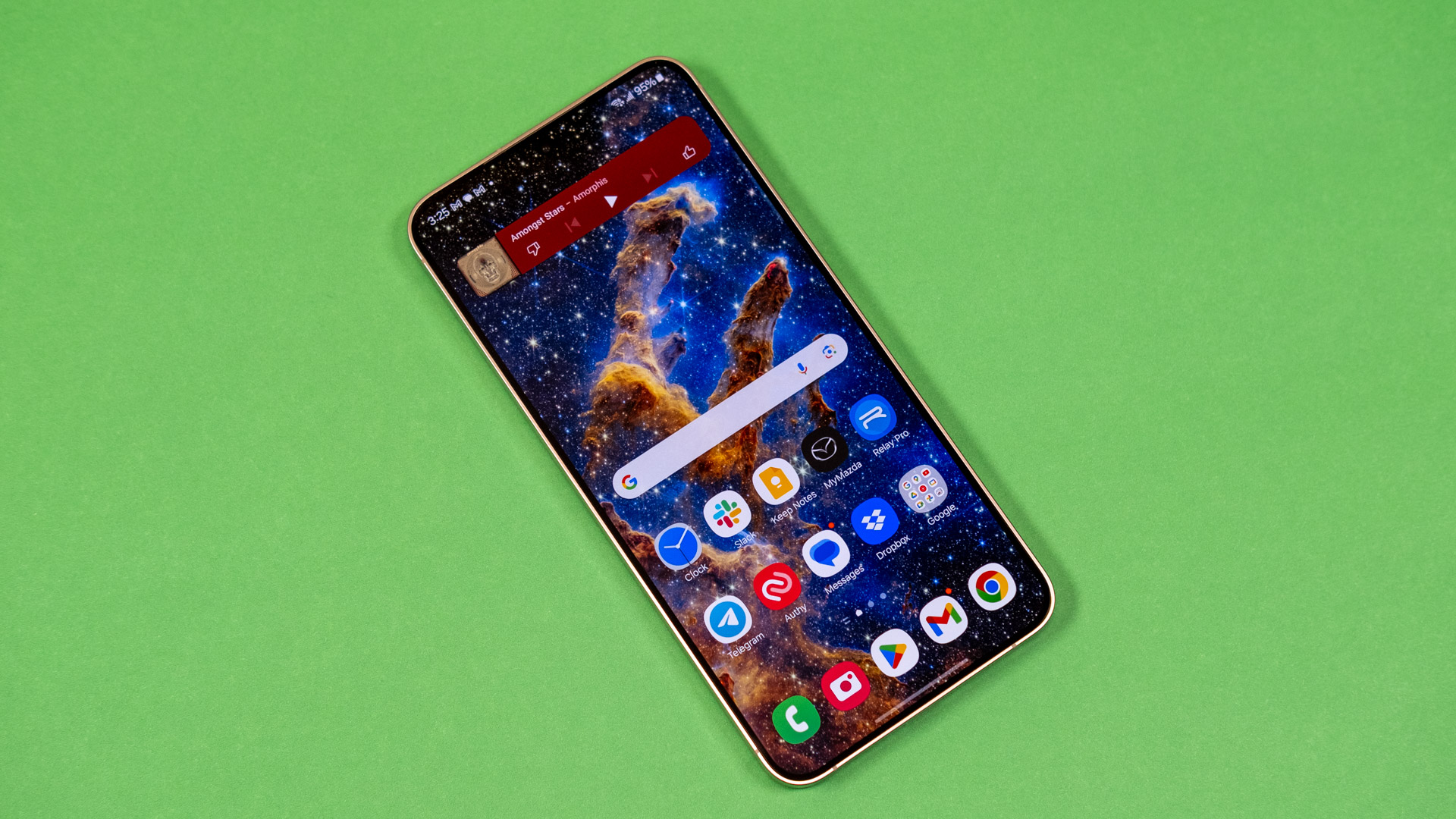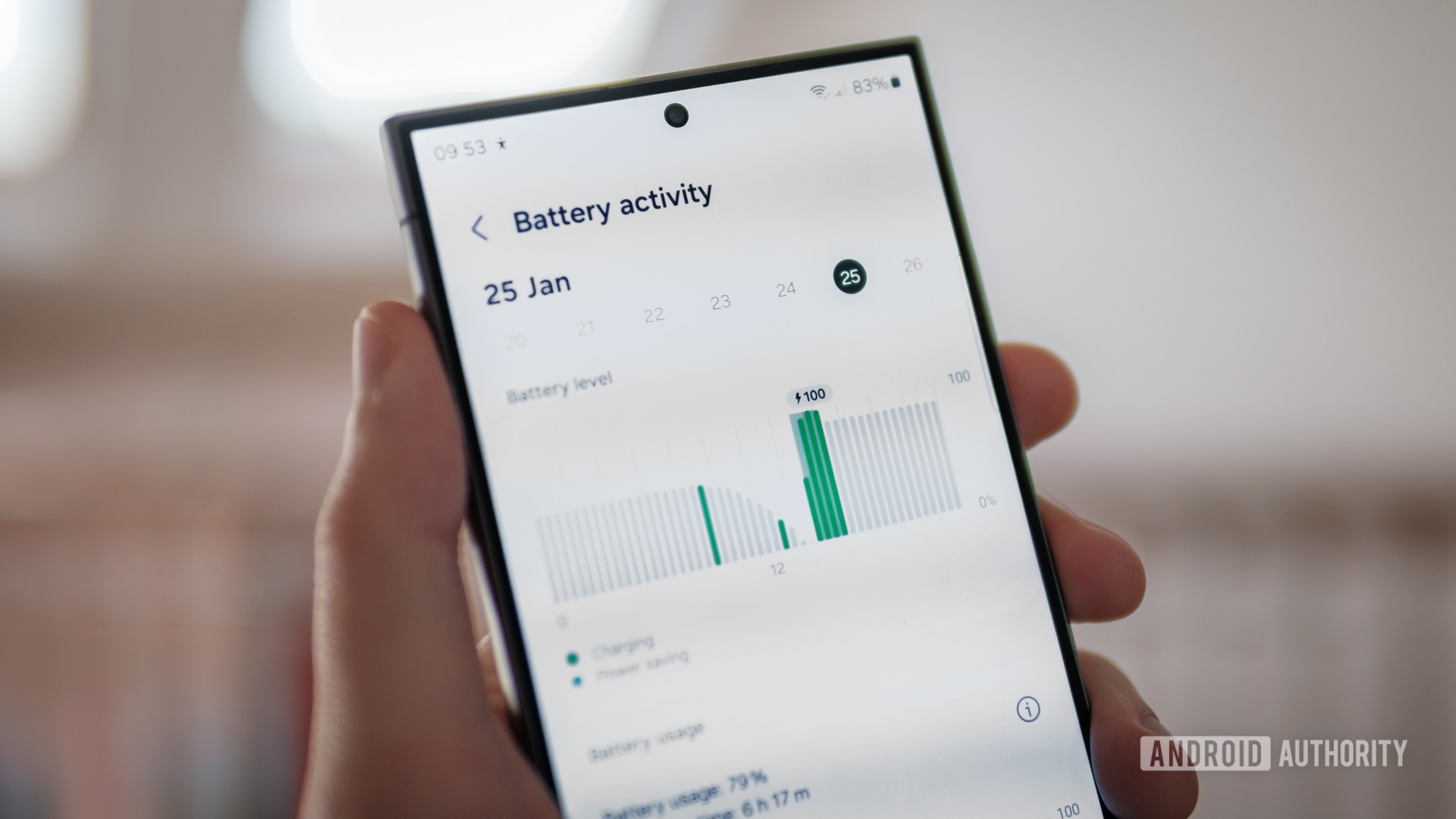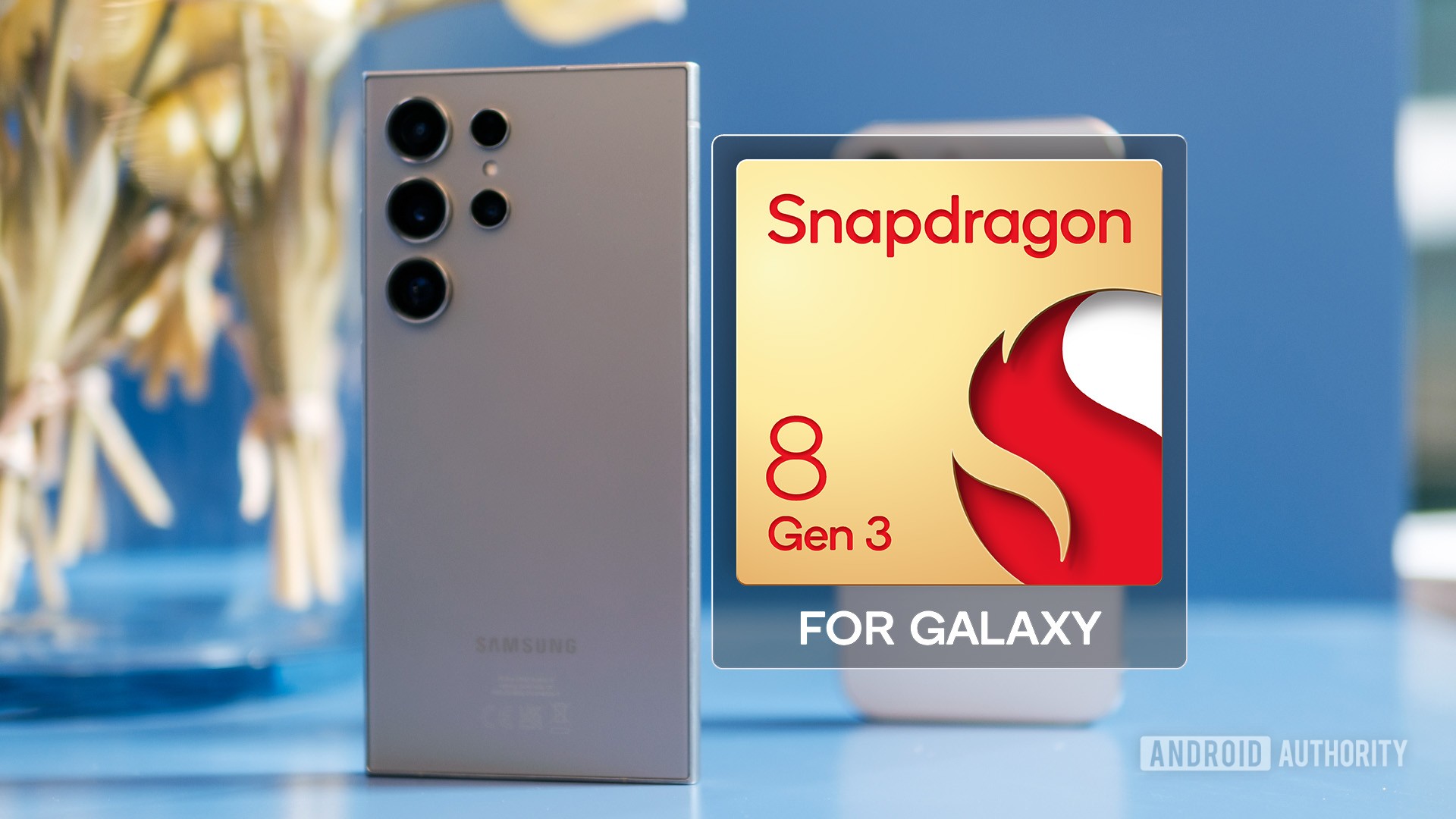Affiliate links on Android Authority may earn us a commission. Learn more.
Exynos vs Snapdragon could be a nightmare for the Samsung Galaxy S25
June 2, 2024

We’re still many months away from the launch of the Samsung Galaxy S25 series, but I’m already starting to think that it could be one of the most contentious smartphone launches in recent memory. While we’ve seen the odd rumor already, it’s the announcement of the latest Arm CPUs and GPUs that has really piqued my early interest in the upcoming models. My suspicion, or perhaps even concern, is that these components could lead to a hotly contested Exynos vs Snapdragon debate, perhaps the most ever.
If you’re unfamiliar with the saga, Samsung’s Galaxy S24 series uses the Snapdragon 8 Gen 3 in the Ultra and its other two phones in the US, China, and some other markets. Global customers buying the S24 or S24 Plus receive the Exynos 2400. A similar global vs US split has been the status quo for many years.
While Samsung does its best to ensure feature parity between all of its models, there are inevitable performance, battery life, and networking differences between its phones, owing to their different chipsets. The recently announced Arm CPU cores look set to make the Exynos 2500 and Snapdragon 8 Gen 4 much more drastically different; let me explain why.
Exynos uses Cortex while Snapdragon is moving to Phoenix CPUs. Performance could be about to diverge, big time.
Qualcomm has used Cortex CPU core designs from Arm since 2017’s Snapdragon 835. Before that, it developed its custom Krait cores based on Arm’s architecture and is returning to a similar formula with the Snapdragon 8 Gen 4 following its acquisition of Nuvia in 2021. The chip is rumored to include six Phoenix L and two Phoenix M cores derived from the Oryon architecture inside the Snapdragon X Elite platform for Arm-based PCs.
Samsung has also been using Arm’s Cortex CPUs for Exynos, and while the chips do not always match the exact topology, the two have shared very similar performance points and features over recent years. As far as we know, Samsung is not developing a custom CPU for mobile, and so will almost certainly use the new Arm Cortex-X925, A725, and A520 in some configuration for the Exynos 2500, which could power the Galaxy S25. Performance between Exynos and Snapdragon models could be about to diverge big time. But that’s just the start of a potentially chasmic divide.
Should Samsung consider a global Exynos Galaxy S25 to keep prices down?
Obviously, any platform derived from a PC-class CPU will be powerful, but equally, there’s a risk it might be power-hungry. Early rumors (which are admittedly a bit dubious) point to next-gen phones having larger batteries, although that’s not necessarily due to higher power consumption. From what we know so far, it doesn’t look like there’s a tiny Phoenix CPU core, which is very different from what we’re used to in the Android chipset space. Given that, typically, Exynos has better battery life than Snapdragon, we could be looking at some significant discrepancies in battery life and/or capacity. Particularly if Arm’s latest CPU platform is up to 30% more power efficient, as claimed.
Of course, we don’t know exactly what performance point Phoenix will reach. Roughly eyeballing Arm’s claimed 35% boost generation boost with the Cortex-X925 suggests the core might catch up to and marginally overtake the single-core grunt of the Apple A16 Pro (the current market leader). That’s a solid gain but won’t lead the industry once rivals announce their latest chips. Still, the A16 Pro is an interesting comparison point though, as Apple’s SoCs focus on big core performance and don’t use little cores either.
If, and it’s still a big if, Qualcomm’s Phoenix cores push beyond Apple, it would create a more noticeable performance gap between entries in the Galaxy S25 series (and other Android phones). Conversely, if the chip is too power-hungry, the 8 Gen 4 might struggle to match the sustained performance of Exynos, which would be a major reversal of recent trends.
The Snapdragon 8 Gen 4 is expected to cost more, so what does this mean for Exynos models?
Costs are also expected to shoot up. Rumors point to a potentially “significant” price increase for the Snapdragon 8 Gen 4, possibly owing to a combination of custom-core development costs, a pricier 3nm TSMC manufacturing node, and/or simply charging a higher price for top-tier performance. Consumers are already feeling the squeeze, but it’s unclear if Samsung will skew its pricing slightly more in Snapdragon and Exynos regions to accommodate the different costs or if a flatter pricing strategy will leave global customers paying even more for potentially less.
Samsung could take a page from Apple’s playbook to bypass the issue — its rival has shipped older but still very capable silicon in its lower-priced iPhones for a few years now. Samsung could consider a global Exynos rollout for the baseline Galaxy S25 to keep costs down, which is arguably better than Apple’s strategy as the Exynos 2500 will still be new. Samsung has already laid the foundations for such an approach with the Snapdragon-only setup in the Galaxy S24 Ultra. The drawback is that this would widen the technological gap between its standard, Plus, and Ultra models, but perhaps that’s fair enough.

It’s not just price and raw performance metrics that matter regarding Arm Cortex vs Oryon/Phoenix. Due to the age of its development cycle, Qualcomm’s custom CPU is based on the older Armv8 architecture, while 2024’s Cortex products are built on Armv9.2 — complete with the newer features that entails. This is important because 2021’s Armv9 introduced several key improvements, including Scalable Vector Extension (SVE2) and Memory Tagging Extension (MTE).
SVE2 instructions are a major enhancement for machine learning performance and other DSP workloads that run directly on the CPU. During its recent CPU announcements, Arm noted that around 70% of AI-focused apps run on the CPU rather than a dedicated neural processor. As such, the company claims solid double-digit ML gains for its latest X925 CPU core. There are lots of variables, but it’s possible that ML workloads might run worse on the 8 Gen 4’s CPU compared to the X925, making application development much more reliant on the SoC’s neural processor and Qualcomm’s in-house APIs. This obviously isn’t good for third-party products or performance parity with Exynos.
Different CPUs mean AI and security features could differ between the two chips too.
MTE, on the other hand, is a big deal for security. It helps developers identify memory bugs and avoid memory exploits like Spectre and Meltdown (remember them?). Now, Qualcomm’s Oryon cores are apparently based on Armv8.7, and MTE was introduced in v8.5, so in theory, Qualcomm’s PC chips are secure here. However, whether this holds true with Phoenix remains to be seen. I imagine it will, but that would be a key point of discussion if it doesn’t. Granted, since Google introduced support for MTE in Android 13, only the Google Pixel 8 and vivo X100 series use it, but support will grow in the coming years.
One entirely new security feature in Armv9 is the Confidential Compute Architecture and Realms, designed to containerize apps and their data securely with minimal overhead. This isn’t a core Android feature yet, but it’s the next step in Linux security (and beyond) and could be a boon for virtual environments. In any event, more devices are expected to support these important security features in the future. Qualcomm should have parity if it’s to be considered on the cutting edge.
Of course, this does not touch on the usual differences between Exynos and Snapdragon. There’s already a gap in graphics performance that could grow further depending on Samsung’s choice of GPU partners (rumored to be AMD still), and Exynos’ modem stack continues to be a little more questionable.
AI, currently a huge differentiating factor, is perhaps the most at risk of handset discrepancy, especially if Galaxy AI increasingly uses on-device processing in the future. Samsung is rumored (again very shakily) to be courting Google’s TPU technology from Tensor, perhaps in a bid to close the performance and API gap on Qualcomm’s Hexagon NPU suite. Either way, this is an equally key space to watch.

Obviously, I don’t have a crystal ball and wouldn’t want to speculate too heavily on exactly what the Exynos 2500 or Snapdragon 8 Gen 4 will look like. That said, there are clear indicators that some of the biggest changes are coming to the SoC industry in years, and they’re likely to leave Samsung with some tough choices to make about the Galaxy S25.
Will the series be forced to hobble its best capabilities even further to maintain feature parity across the lineup? Will chipsets be restricted to specific models, as there’s an increasingly good case for an Exynos-only base Galaxy S25 if Snapdragon prices shoot up? Might Samsung go Snapdragon-only across the whole range this time? It’s all to be seen.
Furthermore, the changes coming with the Snapdragon 8 Gen 4, particularly its CPU’s AI and security capabilities and power consumption, will have repercussions across the Android ecosystem. And then there’s the price; Qualcomm expects at least “some cost increase” over 8 Gen 3, which surely means those ultra-premium Android smartphones (and even some of the more affordable ones) could be even more expensive next year. I, for one, will be watching the end of 2024 with extra-keen interest.
Thank you for being part of our community. Read our Comment Policy before posting.